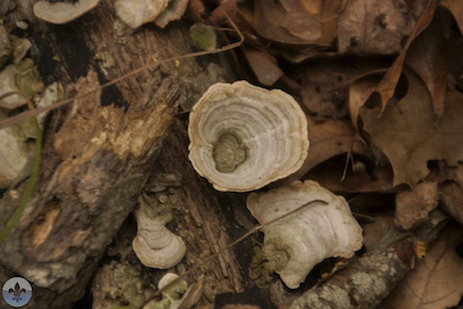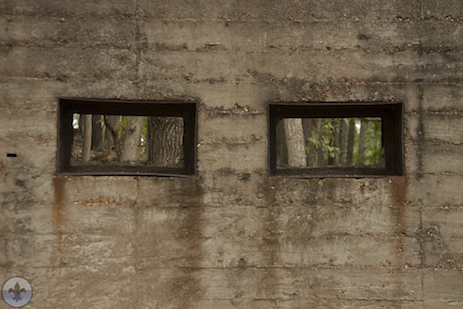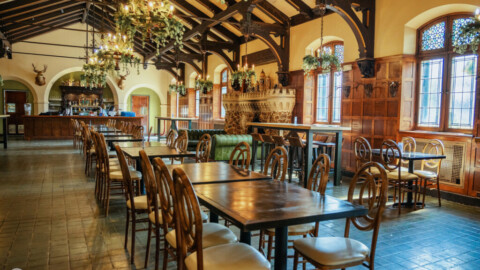photograph by Jeni Kulka
Lone Elk Park sits on the site of a former U.S. Military munitions testing area. Primarily, the accuracy of large caliber weapons and ammunition was the focus, and the facility was active during World War II and the Korean War. Many structures still exist in the Park referencing this history. Between the Wars, the land was turned over to the municipality, and populations of Elk and Bison were established with the intention of it becoming a public attraction. When the Government seized back control during the Korean War, the herds were eliminated. However, a lone, Bull Elk somehow survived (thus the name). After the War, the land was again ceded to the County, who reestablished the herds.
photograph by Jason Gray
photograph by Louie Liu
photograph by Mandi Gray
photograph by Jeni Kulka
photograph by Siobhan Lestina
On the day that Photo Flood Saint Louis visited Lone Elk Park, the air was warm and heavy with humidity, and the sky threatened rain. We were all worried that our good luck regarding bad weather was about to run out, and that it would happen on the first Photo Flood to be set in the woods. Our 3.2 mile hike (the published distance, although our personal pedometer registered 5 miles) began with a steep ascent up a slippery, rocky path. On top of this first hill, we all paused for a moment, already sweating bullets; was a 3 mile hike, up and down hills like this one, in steamy humidity and under the threat of rain, really a good idea for a group of photographers lugging heavy gear? Yes, it turns out that it was a fantastic idea!
photograph by Louie Liu
photograph by Amanda Krebel
photograph by Jason Gray
photograph by Jeni Kulka
photograph by Ann Aurbach
Lone Elk Park is a 546-acre wilderness area managed by St. Louis County Parks. The area was originally part of the vast Tyson Valley land tract, which was assembled by the United States Army to test weapons and ammunition. Traces of this former use dot the landscape in the form of concrete walls and structures, and a large viewing tower. The Park itself is nestled between ridges with a low-point in its center that hosts a manmade lake. Even without the animals, the Park would be a great attraction due to its splendid setting. However, large herbivores definitely are the attraction, and Lone Elk Park is home to herds of elk, buffalo and whitetail deer. Over the years, St. Louis County Parks has acquired the animals from various points of origin, including Yellowstone National Park for the elk, the State of Oklahoma and the St. Louis Zoo for the buffalo, and Grant’s Farm for the deer. Today, the populations are mostly self-sustaining. The trail that we took is named White Buffalo Trail, though no buffalo are allowed in this section of the park (the buffalo live in a separate area where visitors must remain in their vehicles). The path begins at the Park’s Visitor Center and winds all the way around the lake to end at this same point. The trek is remarkably beautiful with terrain ranging to include steep rocky hillsides, dense forests, and gently rolling grassland. Several points along the trail open up to expansive views across the valley.
photograph by Siobhan Lestina
photograph by Jason Gray
photograph by Jeni Kulka
photograph by Ann Aurbach
photograph by Jeni Kulka
The idea to convert the available land into an open-air zoo was made somewhat pragmatically. Originally, the Park included more typical amenities like athletic fields, barbeque pits and bridle trails for horseback riding. However, because the military had already assumed the cost of enclosing the land with fencing and had paved miles of winding roads through the Park, the Park Advisory Board materialized a grander vision. The first populations of elk, buffalo and deer were present when St. Louis County dedicated the area as “Tyson Valley Park” in 1950. Unfortunately, the military seized back control the following year. The buffalo were relocated to South Dakota, and the deer and elk were left to roam as large caliber weapon fire again rang out across the valley. Although accounts for why vary (they range from a vehicle being struck by a bull elk, to the high cost of maintenance, to plain “safety”), the Army rounded up the remaining animals and exterminated them. In the mid-1960’s, St. Louis County Parks again came to possess the land, a battle they reportedly won against Washington University, and ideas about what to do with the property started to circulate anew. Allegedly, it is at this point that a lone bull elk was discovered to have survived elimination, and inspired the concept to re-establish the herds (and to change the name of the Park). Today, to encounter these enormous creatures on foot is a compelling experience, and one which we are happy to have available to residents of St. Louis.
photograph by Jason Gray
photograph by Jeni Kulka
photograph by Mandi Gray
photograph by Jason Gray
Lone Elk Park is a free public park, and is open year-round. This event marks Photo Flood Saint Louis’ first trip outside the city limits.




























[…] that includes preserving both birds and bird habitats, the Sanctuary spans 105 acres, near both Lone Elk Park and Castlewood State Park. Formed in 1977 as the Raptor Rehabilitation and Propagation Project, WBS […]
[…] The Park has a very interesting history, which I wrote about for Photo Flood Saint Louis here. […]